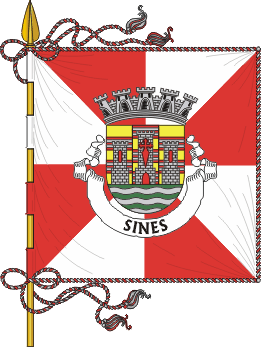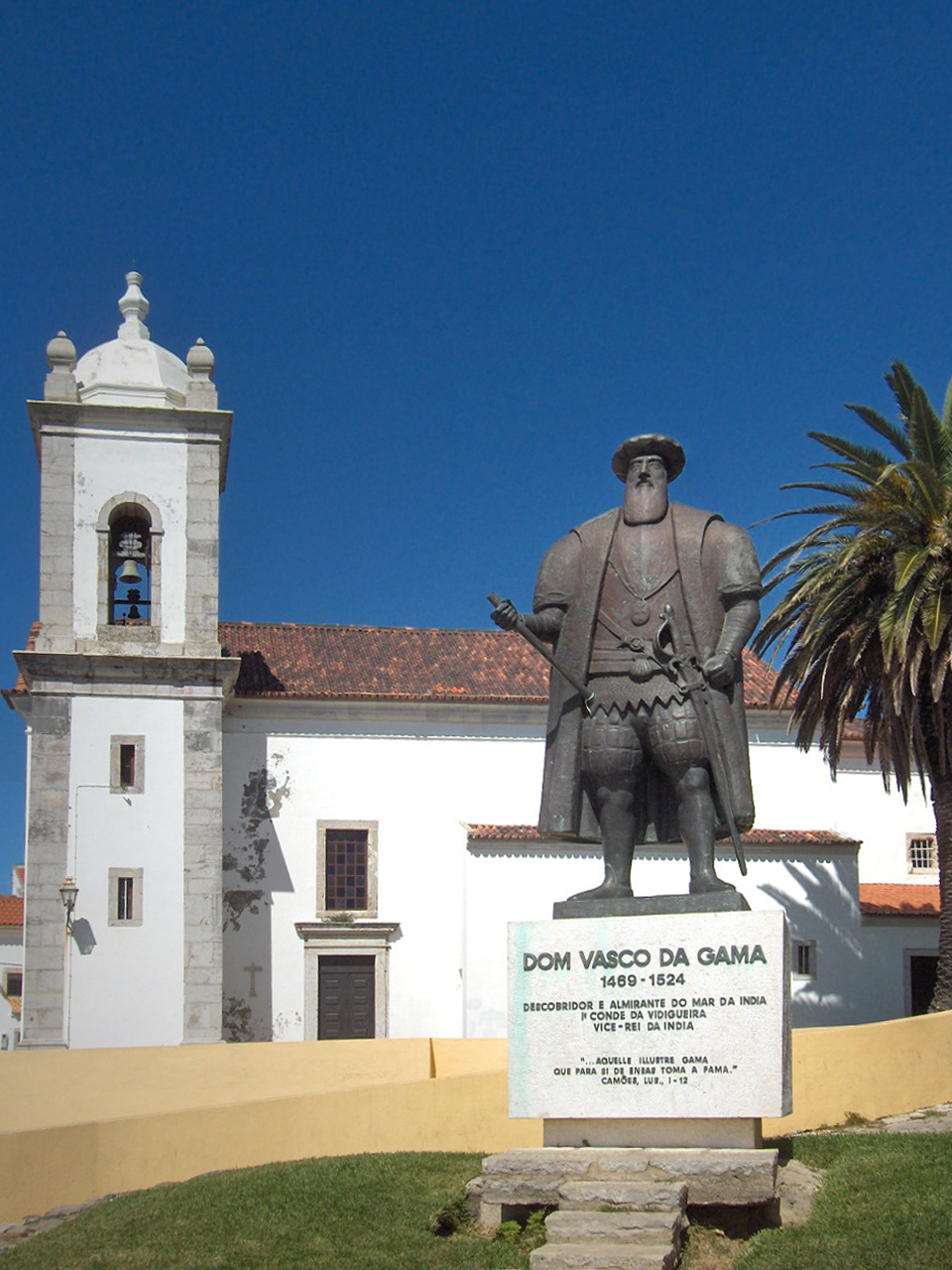|
Sines
Sines () is a city and a municipality in Portugal. The municipality, divided into two parishes, has around 14,214 inhabitants (2021) in an area of . Sines holds an important oil refinery and several petrochemical industries. It is also a popular beach spot and the main fishing harbor of Alentejo region. The municipality is bordered to the north and east by the municipality of Santiago do Cacém, south by Odemira and west by the Atlantic Ocean. The coastline of the city, south of São Torpes, is part of the Southwest Alentejo and Vicentine Coast Natural Park. History Vestiges of a few settlements have today been discovered in archaeological sites, such as Palmeirinha and Quitéria, that attest to the age of human settlements in Sines. Arnaldo Soledade (1981) noted that these Visigoths, identified as ''Cinetos'', may have been the original civilization that gave rise to the community, suggesting the local toponymy may have derived from this; ''Cinetos'', to Cines and, finally, S ... [...More Info...] [...Related Items...] OR: [Wikipedia] [Google] [Baidu] |
Vasco Da Gama
Vasco da Gama, 1st Count of Vidigueira (; ; c. 1460s – 24 December 1524), was a Portuguese explorer and the first European to reach India by sea. His initial voyage to India by way of Cape of Good Hope (1497–1499) was the first to link Europe and Asia by an ocean route, connecting the Atlantic and the Indian oceans. This is widely considered a milestone in world history, as it marked the beginning of a sea-based phase of global multiculturalism. Da Gama's discovery of the sea route to India opened the way for an age of global imperialism and enabled the Portuguese to establish a long-lasting colonial empire along the way from Africa to Asia. The violence and hostage-taking employed by da Gama and those who followed also assigned a brutal reputation to the Portuguese among India's indigenous kingdoms that would set the pattern for western colonialism in the Age of Exploration. Traveling the ocean route allowed the Portuguese to avoid sailing across the highly disputed ... [...More Info...] [...Related Items...] OR: [Wikipedia] [Google] [Baidu] |
Pessegueiro Island
Pessegueiro Island ( pt, Ilha do Pessegueiro, links=no), literally ''island of the Peachtree'', is a small island/islet located along the southwest coast of the civil parish of Porto Covo in the municipality of Sines. The island and the adjacent coast are part of Southwest Alentejo and Vicentine Coast Natural Park, but Pessegueiro island is also notable for the 15th-16th century fort located at its centre and Roman ruins along the coast. History Historically, the island was first occupied by the Carthaginians before the Second Punic War (218-202 BCE). At the time of the Roman conquest of Hispania, the island hosted a small fish processing centre, as determined by archaeological excavations which discovered the remains of salt tanks along the southern coast. To help defend against privateers, the natural anchorage was extended at the time of the Iberian Union with an artificial rock barrier connecting the island of Pessegueiro to the coastline. In 1590, construction began on t ... [...More Info...] [...Related Items...] OR: [Wikipedia] [Google] [Baidu] |
Miróbriga
Miróbriga (''Mirobriga Celticorum'') is an ancient Roman town located near the village and civil parish of Santiago do Cacém, in the municipality of the same name in the south-west of Portugal. Archeology revealed that the town occupied the site of an ancient Iron Age settlement that existed since the 9th century B.C. With the Roman colonization, a commercial area developed around the Forum. The Thermae, among the best preserved in Portugal, consist of two adjoining buildings, possibly for male and female use respectively. The residential areas are still little known. Relatively close to the baths, there is a bridge with a single semicircular arch. The Hippodrome, the only one whose entire ground plan is completely known in Portugal, is located further from the centre. History Excavations and investigations (W. Biers, 1988), suggest that the earliest settlement began to take shape in the 9th century BC. (Iron Age), and that the defensive walls began appearing between the 4t ... [...More Info...] [...Related Items...] OR: [Wikipedia] [Google] [Baidu] |
Alentejo
Alentejo ( , ) is a geographical, historical, and cultural region of south–central and southern Portugal. In Portuguese, its name means "beyond () the Tagus river" (''Tejo''). Alentejo includes the regions of Alto Alentejo and Baixo Alentejo. It corresponds to the districts of Beja, Évora, Portalegre, and Alentejo Litoral. Its main cities are Évora, Beja, Sines, Serpa, Estremoz, Elvas, and Portalegre. It has borders with Beira Baixa in the north, with Spain (Andalucia and Extremadura) in the east, Algarve in the south, and the Atlantic Ocean, Ribatejo, and Estremadura in the west. Alentejo is a region known for its traditional polyphonic singing groups, similar to those found in Tuscany, Corsica, and elsewhere. History The comarca of the Alentejo became the Alentejo Province, divided into upper ( Alto Alentejo Province) and lower ( Baixo Alentejo Province) designations. The modern NUTS statistical region, Alentejo Region, was expropriated from the mediev ... [...More Info...] [...Related Items...] OR: [Wikipedia] [Google] [Baidu] |
Alentejo Region
Alentejo Region () is one of the seven NUTS 2 regions of Portugal. It covers all of the historical Alentejo Province and part of the historical Ribatejo and Estremadura provinces. The greater region is defined within Portugal by the land bordering the left bank of the river Tagus to the North and extending to the South where it borders the Algarve region. The origin of its name, "além" + "Tejo" combined as Alentejo, literally translates to "Beyond-the-Tagus". However, a large part of the subregion Lezíria do Tejo is located on the right bank of the Tagus. The Alentejo is completely located beyond the left margin of the Tagus River. Its main cities are Évora, Elvas, Portalegre, Beja, Moura, Serpa, Sines Sines () is a city and a municipality in Portugal. The municipality, divided into two parishes, has around 14,214 inhabitants (2021) in an area of . Sines holds an important oil refinery and several petrochemical industries. It is also a popular ... an ... [...More Info...] [...Related Items...] OR: [Wikipedia] [Google] [Baidu] |
Odemira
Odemira ( or ) is a town and a municipality in Beja District in the Portuguese region of Alentejo. The population in 2011 was 26,066, in an area of 1720.60 km2, making it the largest municipality of Portugal by area. It is famous for its wild beaches and for being home to a significant Dutch and German community. The village of Zambujeira do Mar is home to the Festival do Sudoeste, one of the biggest rock festivals in Europe. The municipality of Odemira has great agricultural potential, specially in the western area of the region, and is home to major operations of important agricultural companies like Vitacress, world leader in the salad market. The present Mayor is José Alberto Guerreiro, elected by the Socialist Party. The municipal holiday is 8 September. Geography The municipality of Odemira is located in southwestern Portugal, bordered by the municipalities of Sines and Santiago do Cacém to the north, Ourique to the east, and the Algarvian municipalities of A ... [...More Info...] [...Related Items...] OR: [Wikipedia] [Google] [Baidu] |
Alentejo Litoral
The Comunidade Intermunicipal do Alentejo Litoral () is an administrative division in Portugal. It was created in May 2009. It is also a NUTS3 subregion of the Alentejo Region. Instituto Nacional de Estatística, 18 March 2015 The seat of the intermunicipal community is |
Setúbal District
The District of Setúbal ( pt, Distrito de Setúbal ) is a district located in the south-west of Portugal. It is named for its capital, the city of Setúbal. Geography It is delimited by Lisbon District and Santarém District on the north, Évora District on the east, Beja District on the south and the Atlantic Ocean on the west. It has an area of , and a population of 789,459 inhabitants. It was split off from Lisbon District in 1926, and is the only Portuguese district created after 1835. Municipalities It is composed of 13 municipalities, spread over two sub regions: * Península de Setúbal Subregion NUTS II Sub-Region: ** Alcochete ** Almada ** Barreiro ** Moita ** Montijo ** Palmela ** Seixal ** Sesimbra ** Setúbal * Alentejo Litoral Subregion: ** Alcácer do Sal ** Grândola ** Santiago do Cacém ** Sines List of Parliamentary Representatives Summary of votes and seats won 1976-2022 , - class="unsortable" !rowspan=2, Parties!!%!!S!!%!!S!!%!!S! ... [...More Info...] [...Related Items...] OR: [Wikipedia] [Google] [Baidu] |
Marble
Marble is a metamorphic rock composed of recrystallized carbonate minerals, most commonly calcite or dolomite. Marble is typically not foliated (layered), although there are exceptions. In geology, the term ''marble'' refers to metamorphosed limestone, but its use in stonemasonry more broadly encompasses unmetamorphosed limestone. Marble is commonly used for sculpture and as a building material. Etymology The word "marble" derives from the Ancient Greek (), from (), "crystalline rock, shining stone", perhaps from the verb (), "to flash, sparkle, gleam"; R. S. P. Beekes has suggested that a " Pre-Greek origin is probable". This stem is also the ancestor of the English word "marmoreal," meaning "marble-like." While the English term "marble" resembles the French , most other European languages (with words like "marmoreal") more closely resemble the original Ancient Greek. Physical origins Marble is a rock resulting from metamorphism of sedimentary carbonate ro ... [...More Info...] [...Related Items...] OR: [Wikipedia] [Google] [Baidu] |
Amulet
An amulet, also known as a good luck charm or phylactery, is an object believed to confer protection upon its possessor. The word "amulet" comes from the Latin word amuletum, which Pliny's ''Natural History'' describes as "an object that protects a person from trouble". Anything can function as an amulet; items commonly so used include statues, coins, drawings, plant parts, animal parts, and written words. Amulets which are said to derive their extraordinary properties and powers from magic or those which impart luck are typically part of folk religion or paganism, whereas amulets or sacred objects of formalised mainstream religion as in Christianity are believed to have no power of their own without faith in Jesus and being blessed by a clergyman, and they supposedly will also not provide any preternatural benefit to the bearer who does not have an appropriate disposition. Talisman and amulets have interchangeable meaning. Amulets refer to any object which has the power to ... [...More Info...] [...Related Items...] OR: [Wikipedia] [Google] [Baidu] |
Scarab (artifact)
Scarabs were popular amulets and impression seals in ancient Egypt. They survive in large numbers and, through their inscriptions and typology, are an important source of information for archaeologists and historians of the ancient world. They also represent a significant body of ancient art. For reasons that are not clear (although likely connected to the religious significance of the Egyptian god Khepri), amulets in the form of scarab beetles had become enormously popular in Ancient Egypt by the early Middle Kingdom (approx. 2000 BCE) and remained popular for the rest of the pharaonic period and beyond. During that long period the function of scarabs repeatedly changed. Primarily amulets, they were also inscribed for use as personal or administrative seals or were incorporated into jewelry. Some scarabs were created for political or diplomatic purposes to commemorate or advertise royal achievements. By the early New Kingdom, ''heart scarabs'' had become part of the battery ... [...More Info...] [...Related Items...] OR: [Wikipedia] [Google] [Baidu] |




.jpg)


